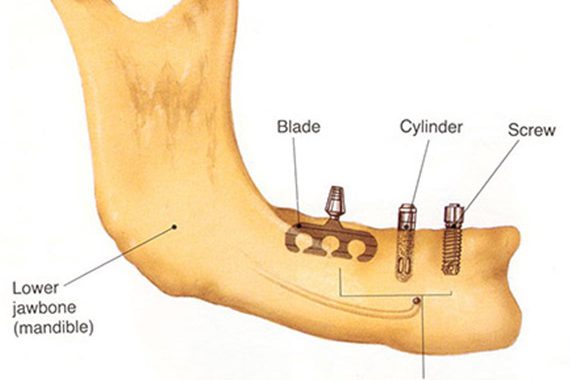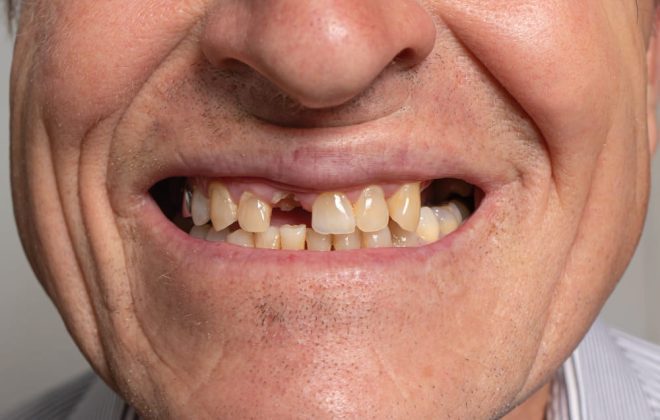(Endosseous) Endosteal Implants
Endosteal is the most commonly used type of dental implant. They are sometimes used as an alternative to a bridge or removable denture. Endosteal implants include screw types (threaded), cylinder types (smooth), or bladed types.
If you are braver than the soldiers and have quite a healthy jawbone, you are suitable for an endosteal/endosseous implant. Compared to a subperiosteal implant, these implants go inside the bones of your jaw. This is also a great alternative for people who can’t or don’t want to have dentures.
The dentist will cut open your jaw and then drill into it. After placing the implants on the jawbone, they will stitch them beside the protruding post. Like with other dental implants, the bone and the implant will undergo osseointegration and needs time to heal.
After recovery, the dentist will attach the extension piece over the implant. This takes time to heal but you can expect a shorter recovery time. Afterward, the dentist will set the replacement.

Treatment
Endosteal implants begin by first drilling into the jawbone to insert a titanium screw that acts as an artificial root. Before you can finish the treatment, you must wait for the soft tissue and bone to heal around the root. This can often be a couple of months.
Stability
Endosteal implants are well known for having one of the most stable, natural-feeling results.
An endosteal implant starts by screwing the implant into the jawbone, which requires sufficient jawbone health and density. If you have a narrow jawbone ridge naturally or one that is short or narrowed and worn down due to trauma or disease, you might not have enough bone needed to properly support an endosteal implant. In this case, a subperiosteal implant may be an option.




